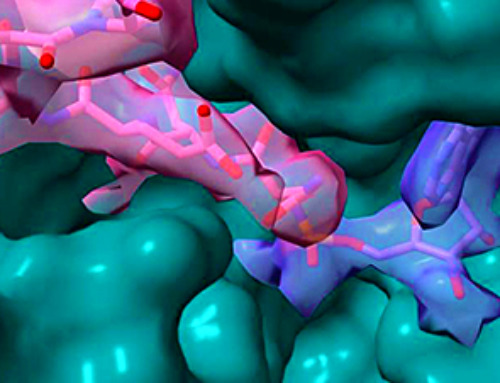A new method enables precise nanofabrication inside silicon using spatial light modulation and laser pulses, creating advanced nanostructures for potential use in electronics and photonics.
Silicon, the cornerstone of modern electronics, photovoltaics, and photonics, has traditionally been limited to surface-level nanofabrication due to the challenges posed by existing lithographic techniques. Available methods either fail to penetrate the wafer surface without causing alterations or are limited by the micron-scale resolution of laser lithography within Si.
In the spirit of Richard Feynman’s famous dictum, ‘There’s plenty of room at the bottom’, this breakthrough aligns with the vision of exploring and manipulating matter at the nanoscale. The innovative technique developed by the Bilkent team surpasses current limitations, enabling controlled fabrication of nanostructures buried deep inside silicon wafers with unprecedented control.
Breakthrough in Nanoscale Fabrication
The team tackled the dual challenge of complex optical effects within the wafer and the inherent diffraction limit of the laser light. They overcome these by employing a special type of laser pulse, created by an approach called spatial light modulation. The non-diffracting nature of the beam overcomes optical scattering effects that have previously hindered precise energy deposition, inducing extremely small, localized voids inside the wafer. This process is followed by an emergent seeding effect, where preformed subsurface nano-voids establish strong field enhancement around their immediate neighborhood. This new fabrication regime marks an improvement by an order of magnitude over the state-of-the-art, achieving feature sizes down to 100 nm.
Advanced Laser Techniques for Nanolithography
“Our approach is based on localizing the energy of the laser pulse within a semiconductor material to an extremely small volume, such that one can exploit emergent field enhancement effects analogous to those in plasmonics. This leads to sub-wavelength and multi-dimensional control directly inside the material,” explained Prof. Tokel. “We can now fabricate nanophotonic elements buried in silicon, such as nanogratings with high diffraction efficiency and even spectral control.”
Enhancing Nanofabrication Through Laser Polarization
The researchers used spatially-modulated laser pulses, technically corresponding to a Bessel function. The non-diffracting nature of this special laser beam, which is created with advanced holographic projection techniques, enables precise energy localization. This, in turn, leads to high temperature and pressure values enough to modify the material at a small volume. Remarkably, the resulting field enhancement, once established, sustains itself through a seeding type mechanism. Simply put, the creation of earlier nanostructures helps fabricate the later nanostructures. The use of laser polarization provides additional control over the alignment and symmetry of nanostructures, enabling the creation of diverse nano-arrays with high precision.
“By leveraging the anisotropic feedback mechanism found in the laser-material interaction system, we achieved polarization-controlled nanolithography in silicon,” said Dr. Asgari Sabet, the study’s first author. “This capability allows us to guide the alignment and symmetry of the nanostructures at the nanoscale.”
Future Implications and Applications
The research team demonstrated large-area volumetric nanostructuring with beyond-diffraction-limit features, enabling proof-of-concept buried nano-photonic elements. These advances have significant implications for developing nano-scale systems with unique architectures. “We believe the emerging design freedom in arguably the most important technological material will find exciting applications in electronics and photonics,” said Tokel. “The beyond-diffraction-limit features and multi-dimensional control imply future advances, such as metasurfaces, metamaterials, photonic crystals, numerous information processing applications, and even 3D integrated electronic-photonic systems.”
Concluding Remarks on Nano-Scale Fabrication Innovations
“Our findings introduce a new fabrication paradigm for silicon,” concluded Prof. Tokel, “The ability to fabricate at the nano-scale directly inside silicon opens up a new regime, toward further integration and advanced photonics. We can now start asking whether complete three-dimensional nano-fabrication in silicon is possible. Our study is the first step in that direction.”
Reference: “Laser nanofabrication inside silicon with spatial beam modulation and anisotropic seeding” by Rana Asgari Sabet, Aqiq Ishraq, Alperen Saltik, Mehmet Bütün and Onur Tokel, 16 July 2024, Nature Communications.
DOI: 10.1038/s41467-024-49303-z
The research team consists of Rana Asgari Sabet, Aqiq Ishraq, Alperen Saltik, Mehmet Bütün, and Onur Tokel, all affiliated with the Department of Physics and the National Nanotechnology Research Center at Bilkent University. Their expertise spans various fields, including optics, materials science, and nanotechnology.
Funding: This study is supported by The Scientific and Technological Research Council of Türkiye (TUBITAK) and the Turkish Academy of Sciences.
News
Nano-Enhanced Hydrogel Strategies for Cartilage Repair
A recent article in Engineering describes the development of a protein-based nanocomposite hydrogel designed to deliver two therapeutic agents—dexamethasone (Dex) and kartogenin (KGN)—to support cartilage repair. The hydrogel is engineered to modulate immune responses and promote [...]
New Cancer Drug Blocks Tumors Without Debilitating Side Effects
A new drug targets RAS-PI3Kα pathways without harmful side effects. It was developed using high-performance computing and AI. A new cancer drug candidate, developed through a collaboration between Lawrence Livermore National Laboratory (LLNL), BridgeBio Oncology [...]
Scientists Are Pretty Close to Replicating the First Thing That Ever Lived
For 400 million years, a leading hypothesis claims, Earth was an “RNA World,” meaning that life must’ve first replicated from RNA before the arrival of proteins and DNA. Unfortunately, scientists have failed to find [...]
Why ‘Peniaphobia’ Is Exploding Among Young People (And Why We Should Be Concerned)
An insidious illness is taking hold among a growing proportion of young people. Little known to the general public, peniaphobia—the fear of becoming poor—is gaining ground among teens and young adults. Discover the causes [...]
Team finds flawed data in recent study relevant to coronavirus antiviral development
The COVID pandemic illustrated how urgently we need antiviral medications capable of treating coronavirus infections. To aid this effort, researchers quickly homed in on part of SARS-CoV-2's molecular structure known as the NiRAN domain—an [...]
Drug-Coated Neural Implants Reduce Immune Rejection
Summary: A new study shows that coating neural prosthetic implants with the anti-inflammatory drug dexamethasone helps reduce the body’s immune response and scar tissue formation. This strategy enhances the long-term performance and stability of electrodes [...]
Scientists discover cancer-fighting bacteria that ‘soak up’ forever chemicals in the body
A family of healthy bacteria may help 'soak up' toxic forever chemicals in the body, warding off their cancerous effects. Forever chemicals, also known as PFAS (per- and polyfluoroalkyl substances), are toxic chemicals that [...]
Johns Hopkins Researchers Uncover a New Way To Kill Cancer Cells
A new study reveals that blocking ribosomal RNA production rewires cancer cell behavior and could help treat genetically unstable tumors. Researchers at the Johns Hopkins Kimmel Cancer Center and the Department of Radiation Oncology and Molecular [...]
AI matches doctors in mapping lung tumors for radiation therapy
In radiation therapy, precision can save lives. Oncologists must carefully map the size and location of a tumor before delivering high-dose radiation to destroy cancer cells while sparing healthy tissue. But this process, called [...]
Scientists Finally “See” Key Protein That Controls Inflammation
Researchers used advanced microscopy to uncover important protein structures. For the first time, two important protein structures in the human body are being visualized, thanks in part to cutting-edge technology at the University of [...]
AI tool detects 9 types of dementia from a single brain scan
Mayo Clinic researchers have developed a new artificial intelligence (AI) tool that helps clinicians identify brain activity patterns linked to nine types of dementia, including Alzheimer's disease, using a single, widely available scan—a transformative [...]
Is plastic packaging putting more than just food on your plate?
New research reveals that common food packaging and utensils can shed microscopic plastics into our food, prompting urgent calls for stricter testing and updated regulations to protect public health. Beyond microplastics: The analysis intentionally [...]
Aging Spreads Through the Bloodstream
Summary: New research reveals that aging isn’t just a local cellular process—it can spread throughout the body via the bloodstream. A redox-sensitive protein called ReHMGB1, secreted by senescent cells, was found to trigger aging features [...]
AI and nanomedicine find rare biomarkers for prostrate cancer and atherosclerosis
Imagine a stadium packed with 75,000 fans, all wearing green and white jerseys—except one person in a solid green shirt. Finding that person would be tough. That's how hard it is for scientists to [...]
Are Pesticides Breeding the Next Pandemic? Experts Warn of Fungal Superbugs
Fungicides used in agriculture have been linked to an increase in resistance to antifungal drugs in both humans and animals. Fungal infections are on the rise, and two UC Davis infectious disease experts, Dr. George Thompson [...]
Scientists Crack the 500-Million-Year-Old Code That Controls Your Immune System
A collaborative team from Penn Medicine and Penn Engineering has uncovered the mathematical principles behind a 500-million-year-old protein network that determines whether foreign materials are recognized as friend or foe. How does your body [...]




















